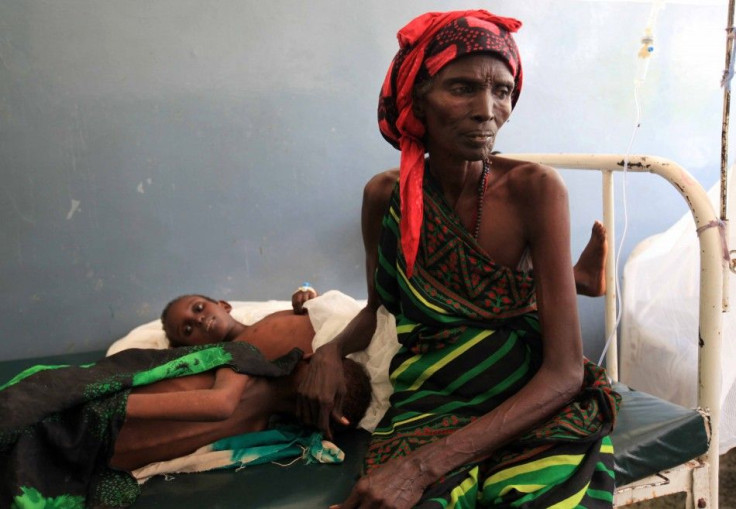Somalia Famine Worsens as African Union Scrambles for Aid

Despite monetary aid coming in from across the world, the famine in Somalia is growing worse by the day.
"This will not be a short crisis," U.N. Emergency Relief Coordinator Valerie Amos said at an Emergency Ministerial Meeting in Rome last week. It will last at least another three to four months, according to Amos, and the number of people needing lifesaving humanitarian assistance could reach 15 million before the situation begins to turn around.
The United Nations said on Friday that another $2.5 billion in aid was required to help those suffering in Somalia. This is higher than the last projected figure of $1.6 billion, an indication that famine is indeed spreading.
Tragically, the lawlessness of the country and the ineffectiveness of the government have exacerbated the famine conditions. Al-Qaida linked rebel group al-Shabaab has de jure control of the two famine-struck regions, and refuses to allow Western aid agencies into the country.
The rebel group also intercepts aid packages, and, according to a New York Times report, has been imprisoning starving people trying to escape the country.
The African Union is holding a conference in the Ethiopian capital of Addis Ababa starting next week to discuss further donations. Somalia's President Sharif Sheikh Ahmed is currently in Sudan, visiting with President Omar al-Bashir in Khartoum in advance of the meeting.
Sudan has already pledged $1.7 million in donations, more than wealthier nations like Saudi Arabia and Russia. President Ahmed has called the joint African and Arab response "good," but "lacking co-ordination."
The term "famine" doesn't simply mean "starving." About 3.7 million people in the Horn of Africa suffer from starvation, while about 6 million more suffer from hunger.
Famine is a technical term that describes the state in which child malnutrition is above 30 percent, at least two in 10,000 people die per day, and where there is no access to food and water for some people. While the whole country of Somalia suffers, only two regions currently qualify for famine -- Bakool and Lower Shabelle, which are in the south of the country.
"If we don't act now, famine will spread to all eight regions of southern Somalia within two months, due to poor harvests and infectious disease outbreaks," said Mark Bowden, the U.N. humanitarian coordinator for Somalia.
Yet, the rest of the country suffers along with the famine-stricken states. There are about 1.25 million children in southern Somalia who are "in urgent need of life saving interventions," U.N. Office for the Coordination of Humanitarian Affairs reports. About 650,000 of the children are acutely malnourished.
One quarter of Somalia's 7.5 million people have been displaced, according to UNOCHA, either within Somalia or abroad.
Most of the fleeing Somalis go to neighboring Kenya, where the U.N. has expanded its Dadaab Refugee Complex to accommodate the influx. Tens of thousands of people are flocking to Kenya each month, and in July alone 40,000 people entered the camp.
Dadaab's population has swelled to 440,000, even though it was only designed to hold 90,000 people.
The current famine is the worst humanitarian disaster in Africa in two decades. The last time there was such a large-scale famine was in 1991-1992; it also occurred in Somalia.
"This is worse than 1992," Dr. Lul Mohamed, Banadir's head of pediatrics, told the New York Times. "Back then, at least we had some help."
© Copyright IBTimes 2025. All rights reserved.




















